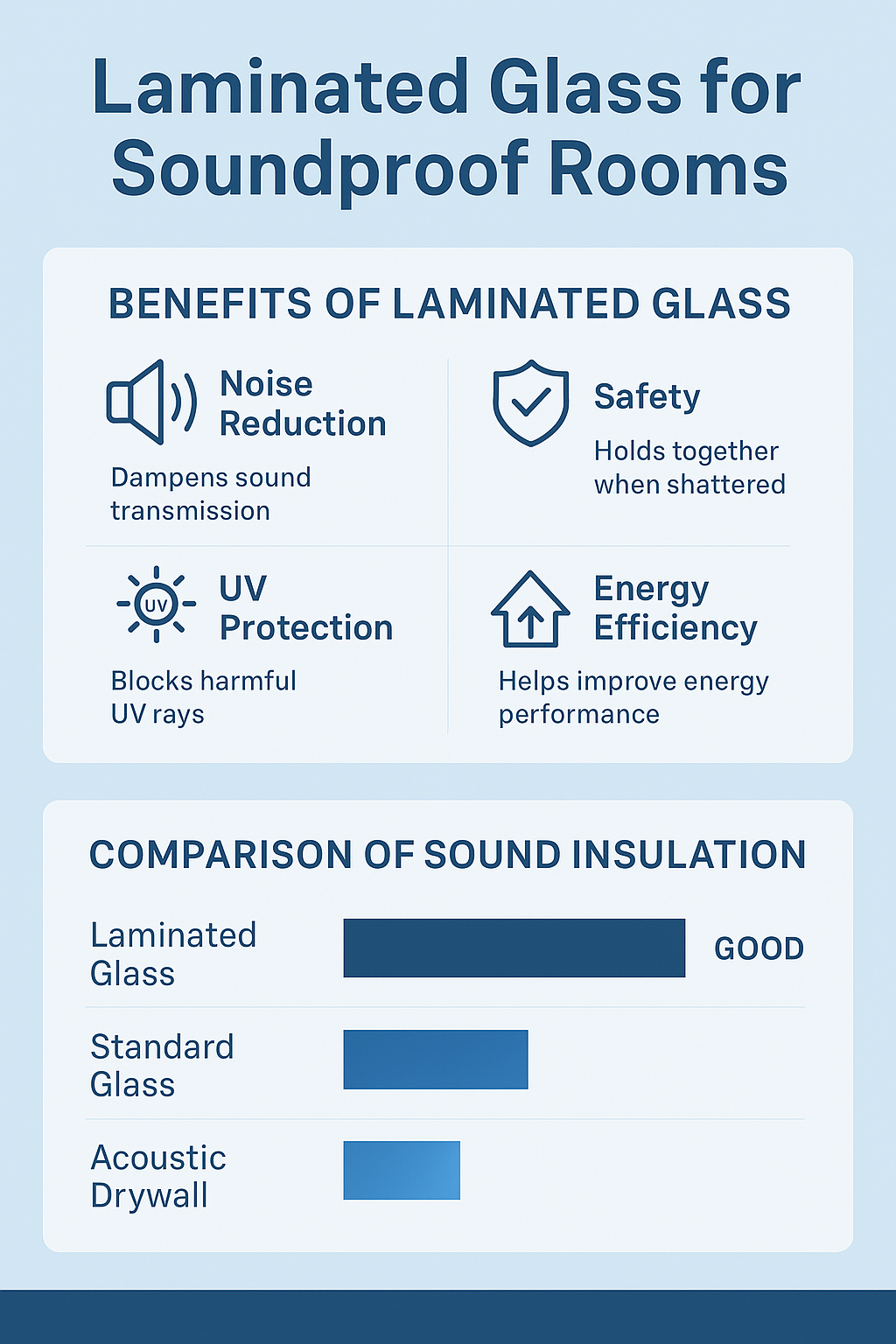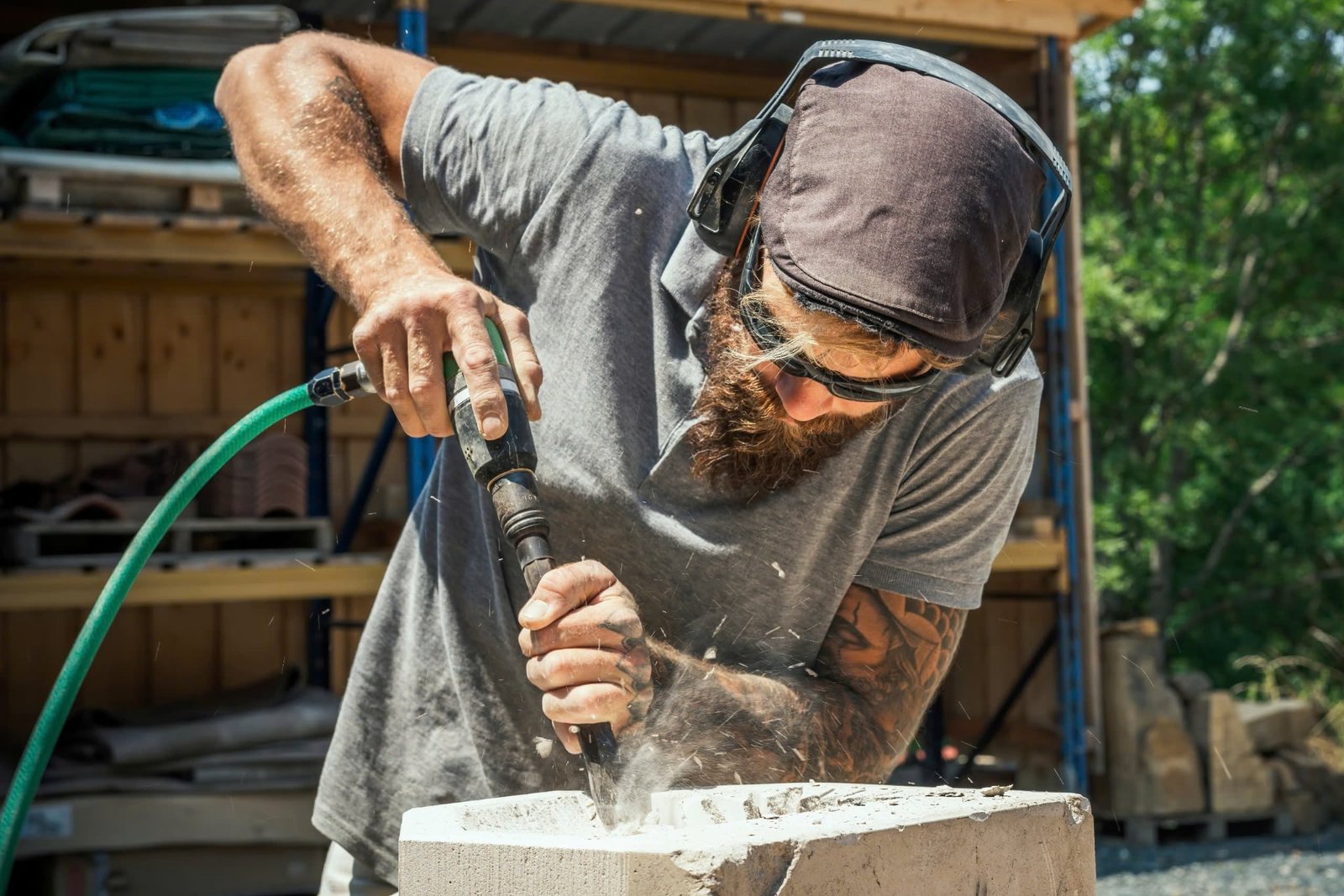
we'll explain why it’s ideal for soundproof rooms, how it outperforms other options, and what to consider when choosing laminated glass for acoustic control.
Creating truly soundproof environments requires materials that can effectively block, absorb, and dampen noise. Among the best materials available today is laminated glass. Whether you’re designing home studios, meeting rooms, hotels, or luxury apartments, glass laminated panels are essential for high-level sound insulation without sacrificing style and visibility.
In this guide, we’ll explain what laminated glass is, why it’s ideal for soundproof rooms, how it outperforms other options, and what to consider when choosing laminated glass for acoustic control.
What Is Laminated Glass?
Laminated glass is a specialized type of safety glass made by bonding two or more layers of glass with an interlayer, usually polyvinyl butyral (PVB) or ethylene vinyl acetate (EVA). This interlayer not only holds the glass together upon impact but also plays a crucial role in sound dampening.
The result is a glass laminated panel that provides superior safety, UV protection, and—most importantly for soundproof rooms—remarkable noise control.
For more technical details on how it helps with sound reduction, explore:
🔗 Laminated Glass with Sound Reduction
Why Use Laminated Glass for Soundproof Rooms
Exceptional Noise Control
The secret behind laminated glass’s acoustic performance lies in the interlayer. Sound energy that hits the glass is partly absorbed and dissipated by the flexible material, preventing it from fully passing through. This makes laminated glass superior to regular or even tempered glass when it comes to noise reduction.
Typical Sound Transmission Class (STC) ratings:
- Single-pane glass: STC ~27
- Tempered glass: STC ~30
- Laminated glass: STC 35–40+
High-quality laminated glass can drastically reduce mid- and high-frequency noises like voices, traffic sounds, and city bustle, making it ideal for soundproof spaces.
Safety and Durability
Besides acoustic advantages, laminated glass is fundamentally a safety laminated glass. It resists breaking under impact and stays bonded together even if shattered. This provides additional peace of mind for:
- Recording studios
- Boardrooms
- Luxury hotel suites
- Home theaters
- Quiet offices
Soundproofing doesn’t have to come at the expense of occupant safety.
UV Protection
In addition to its soundproofing benefits, laminated glass can block up to 99% of UV rays. This protects:
- Musical instruments
- Furnishings
- Artworks
- Electronic equipment
By shielding interiors from UV radiation, laminated glass ensures that soundproof rooms stay not just quiet, but also visually pristine over time.
Applications of Laminated Glass in Soundproof Rooms
Laminated glass can be used across a variety of acoustic applications, including:
- Recording studios: Clear acoustic barriers that maintain visual communication.
- Office conference rooms: Transparent yet silent working spaces.
- Hotels and resorts: Guest rooms insulated from city noise.
- Residential apartments: Quiet sanctuaries in noisy urban environments.
- Schools and libraries: Study areas requiring minimized sound transmission.
- Medical facilities: Private rooms shielded from hospital noise.
By integrating glass laminated walls, windows, or partitions, designers achieve elegant, effective noise control.
Types of Laminated Glass for Soundproofing
Not all laminated glass panels are created equal. For best acoustic performance, specific types are used:
- Standard laminated glass: Good for moderate sound reduction.
- Acoustic laminated glass: Made with specially engineered interlayers to maximize sound dampening (often multi-layered).
- Double-glazed laminated units: Two laminated panels with an air or inert gas layer for ultimate sound insulation.
Choosing the right type depends on the environment’s noise level and desired STC rating.
Laminated Glass Price for Soundproof Rooms
The laminated glass price varies based on:
- Glass thickness (common options: 6.38mm, 8.76mm, 12.76mm)
- Interlayer type (standard PVB vs acoustic-grade PVB)
- Size and customization (framing, edge treatments, coatings)
Typical Price Ranges:
| Glass Type | Price Range per m² |
|---|---|
| Standard laminated glass | $30–$50 |
| Acoustic laminated glass | $50–$80 |
| Double-glazed laminated units | $80–$150+ |
For precise costs and installation options, consult professional laminated glass manufacturers specializing in acoustic applications.
Key Benefits of Laminated Glass for Soundproof Spaces
- High noise reduction without blocking natural light
- Superior safety performance against impact
- Long-term UV protection to preserve interiors
- Energy efficiency with optional low-E coatings
- Design versatility (clear, tinted, frosted, colored, patterned)
No other glass type combines transparency, security, and acoustic control so effectively as laminated glass.
Comparison: Laminated Glass vs. Other Soundproofing Materials
| Feature | Laminated Glass | Standard Glass | Acoustic Drywall |
|---|---|---|---|
| Sound Insulation | Excellent | Poor | Good |
| Visual Transparency | Full (clear or tinted options) | Full or partial | None |
| Impact Resistance | Very High (safety rated) | Low | High |
| UV Protection | Up to 99% | Minimal | None |
| Maintenance | Low | Moderate | Moderate |
When transparency and sound control are both priorities, laminated glass clearly outperforms traditional barriers.
Conclusion
If you’re aiming to create a quiet, stylish, and safe environment, laminated glass is your best choice for soundproof rooms. From residential projects to commercial sound studios, laminated glass offers a unique blend of functionality, safety, and beauty.
Its ability to dampen noise, protect interiors from UV, resist impact, and maintain transparency makes laminated glass a powerful asset in modern architectural acoustics.
Explore how laminated glass can redefine silence in your projects:
🔗 Laminated Glass with Sound Reduction

